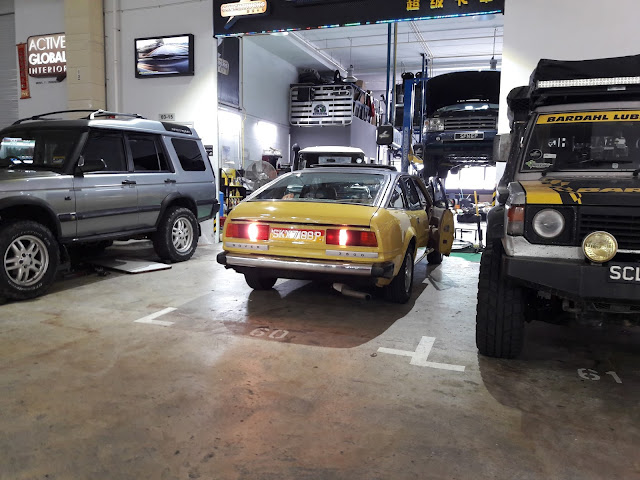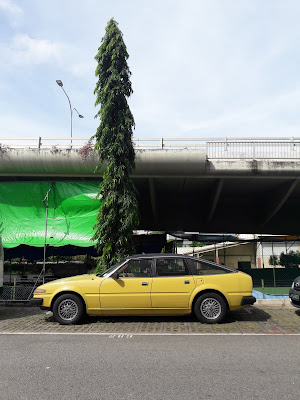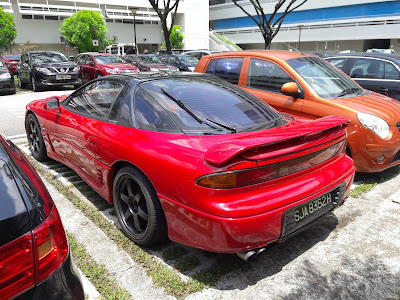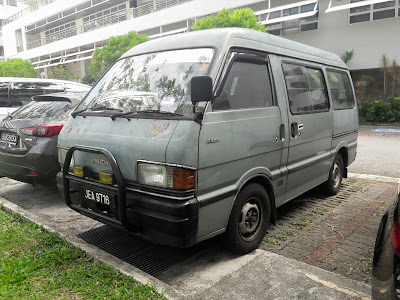I
decided to take a new approach in my documentation of classic cars in Singapore.
Instead of posting pictures only, I felt it would be more interesting if I started a series of write-ups of the vehicles, especially when cars cost an arm and
leg here.
My aim is to make vintage and classic cars more accessible to the general public. Given that many of the cars today look and feel the same in terms of colour, shape and comfort level, I felt there was a need to preserve this unique pieces of history for future generations. With the rise of self-driving cars, I fear that people of the future will cease to realise the illustrious stories behind these oldies. I hope that through my documentation, one will see beyond these vehicles as just "an old car" but rather how it adds colour and vibrancy to an otherwise plain-vanilla road.
I will try to make the write-ups easy to understand for everyone, so I will add in relevant explanations for certain technical terms. More often than not, you will see number plates that are red and yellow in colour like the one below. This represents cars that are registered under the Classic Vehicle Scheme, where they can only be driven on 45 days per year and are at least 35 years old. It is basically a trade-off by the government to restrict older cars on the road, while allowing the owners to pay lower road tax.
Meanwhile, I will be doing this for as long as I can, so please enjoy and leave a comment!
.
.
.
First up, let me
introduce this 1991 Vauxhall Lotus Carlton. What exactly is Vauxhall? Vauxhall is a car manufacturer based in the UK, first
established in 1857. Currently, it is the 2nd largest car brand in the UK and
80% of its exports are badged as Opels, as it is a subsidiary of Adam Opel AG. Car rebadging happens very often as manufacturers target different segments of the world market.This is why its brand name is non-existent here.
At first glance, it
looks pretty nondescript and you could be forgiven if you mistook it for a Mitsubishi. Yet, beneath its hood, it screams power, power and more power.
Lotus has a reputation for tuning cars and this was no exception. It was
capable of doing 285 km/h, with a rather fast acceleration [0-60mph] in 5 seconds.
Its Goodyear tyres enabled the vehicle to achieve high-speed stability and
better performance in wet conditions.
At that time in 1990, it was the fastest
4-door car in the world. Unbelievable, isn't it? One wouldn't have guessed that
this was a beast in disguise. It got so powerful that it was used as getaway
cars in the UK for criminals--the police put it succinctly that they 'were
unable to catch that thing because it was too fast'. Imagine if this was really
used to escape the police--would our own SPF be able to stop it? There was a
video of a Carlton escaping the Swedish police--you can really see how the Carlton just made it look like the police weren’t moving at all!
What made it even
more unique was that only 276 were made, and you are currently looking at one
right now. Opel had plans to make around 1100 models of the Carlton, but only 950 were made--320 from the Vauxhall Carlton and 630 from the Opel Omega. However, actual figures put it at 276 Carltons and the rest Omegas.
Thanks to one of my followers, I established that this is number 282 of 950 made. It was destined for the UK but someone has imported it here. According to him, 2 cars were sent to Singapore--1 had been exported to Japan and the other is back in the UK. This specimen is thus the only one left on our shores!
How this pristine example ended up here in a carpark is anybody's
guess. It has unfortunately fallen into decay--flat tires, random junk piled
inside and the last I checked, the hood had started to warp thanks to the
merciless heat. If there is indeed an owner, I hope he/she would do something
to save this modern classic. This car does not deserve such treatment,
especially when so few are left in the world.
Update: someone from the UK got in touch with me who was interested in buying this. As of April 2019, it is back home in the UK, awaiting full restoration. It was a straightforward process: he wrote a letter to Vicom, talked to the owner and shipped it back. Here's to hoping more of these stories!




































































































